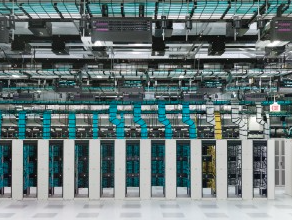Cisco Looks to Boost Datacenter Bandwidth with Standard Switch

Cisco Systems said it is extending its Nexus 9000 series network switch platform to support a standard network overlay protocol. The move also complements Cisco's Application Centric Infrastructure (ACI) initiative.
The networking giant said Friday (Feb. 6) it is extending its software defined networking technology to support the industry standard BGP EVPN protocol (Border Gateway Protocol – Ethernet Virtual Private Network) used for overlay networks. BGP would serve as a control plane for its VXLAN virtual switches.
Support for the protocol in Nexus 9000 switches is scheduled to be available later this month. Support on Cisco Nexus 7000 series switches and the company's ASR 9000 series routers are scheduled for the second quarter of 2015.
Cisco touted its support for networking protocol as expanding deployment choices in datacenters and cloud networks while making it easier to integrate with third-party network overlay controllers.
The move also targets adoption of Cisco's ACI by expanding use of the platform's application policy framework that handles capabilities like integrated overlays as well as physical and virtual network visibility.
Cisco stressed in a blog post that the new capabilities are part of an effort to scale its Nexus datacenter-switching portfolio. "VXLAN continues to pickup steam, and [as] more customers deploy it, these networks are getting, and will continue to get, much larger," predicted Craig Huitema, Cisco's director of datacenter marketing.
In supporting the BGP control plane for VXLAN, Cisco also noted that the draft industry standard did not specify a control plane. The company argues that its version of the BGP control plane for VXLAN represents a standardized approach that leverages the gateway protocol's feature to improve datacenter scaling.
Overlay networks are intended to help scale multi-tenant cloud networks. VXLAN, developed by Cisco and other virtualization platform vendors, is said to be one of the most widely adopted multi-vendor overlay technologies. Cisco said a scalable, industry standard control plane mechanism like BGP EVPN is required to advance the technology.
BGP EVPN also promises to facilitate large scale deployments of overlay networks by removing complexity, promoting greater interoperability via an open standard control plane while providing access to a wider range of cloud management platforms.
Further, running OpenStack or other open-source cloud management platforms on top of a BGP EVPN controller would help enterprises automate the provisioning and management of VXLAN-based overlay networks.
Meanwhile, Cisco said its Nexus 9500 and 9300 switches are designed to keep pace with expanding datacenter bandwidth demands. The new switches include 100 GE modules, with eight ports for the 9500 and four with the 9300 switch. The upgrade is intended to improve spine/core connectivity and direct router interconnects.
Cisco added that the BGP-based control plane for VXLAN is compliant with a draft industry standard that specifies the BGP-EVPN control plane for overlays. It uses the Ethernet virtual private network (EVPN) address-family extension of the Multiprotocol BGP to distribute the requisite overlay information. Along with the Nexus 9000 series, the control plane also will be supported on other Cisco platforms.










